Back in Cairo after a delayed flight from Sharm el Sheikh. It was only delayed about an hour and a half (twice the time of the actual flight itself) but it was enough to make me a feel a little uncomfortable as I had arranged for a transfer from the airport to the hotel and I wasn’t sure if the transfer would still be waiting for me. I was anticipating the hassle of getting to the hotel if he had left already without me. Fortunately he was and I never thought I would be so grateful to see a little old Egyptian man with no teeth holding a sign with my name on it.
I knew the transfer would take about an hour and in Egyptian traffic, that would be 1 hour more than I wanted. So relieved to finally arrive at the hotel and simply enjoy the air con and a cold drink.
Early start the next morning, about 05.00hrs, and headed over to Sakkarra which is the ancient capital of Egypt. It took about 2 hours on an air-conditioned bus to get there but saw the first stone stepped pyramid which was built 27th Century BC, in the Third dynasty for the burial of Pharaoh Djoser by his vizier, Imhotep, long before the more famous pyramids at Giza.
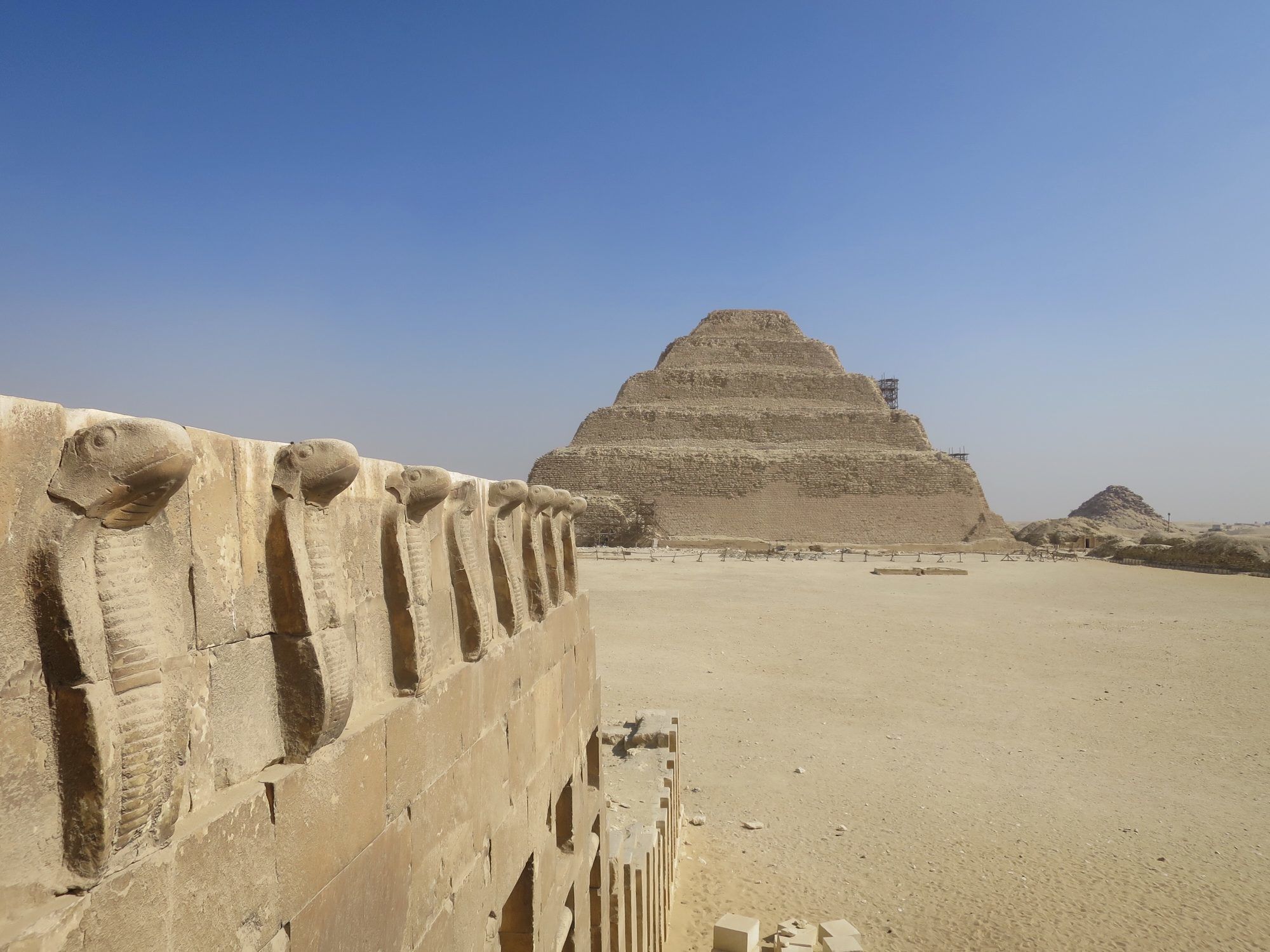
Already it was close to 40 degrees centigrade and it was quite uncomfortable in that heat, even that early in the morning. So back on the bus and back to Cairo to spend some time at The Great Pyramids and The Sphinx. The heat was unbelievable, as were the flies, sadly the amount of litter, but worst of all were the hawkers try to sell you tourist trinkets or trying to get you to ride a camel or go in a horse and carriage for an overinflated price. Even after 3 or 4 “no thank you’s”, they persist to the point where it no longer feels rude about blanking and ignoring them.
That aside though, the pyramids are spectacular and the scale is immense, 146.5m tall and each side base is 230.4m long. The Great Pyramid was built as a tomb for the Egyptian pharaoh Khufu, it took approximately 20 years to build and has three burial chambers inside. Still many theories exist as to how they were build but no matter how they were, it is almost incomprehensible that they were build in this heat. Surely the climate could not have been that different between then and now and they reckon at least 5,000 workers died during the construction. Each block of the granite and limestone is said to weigh between 3-7 tonnes. Plenty of tourists around taking selfies etc, so just to blend in…
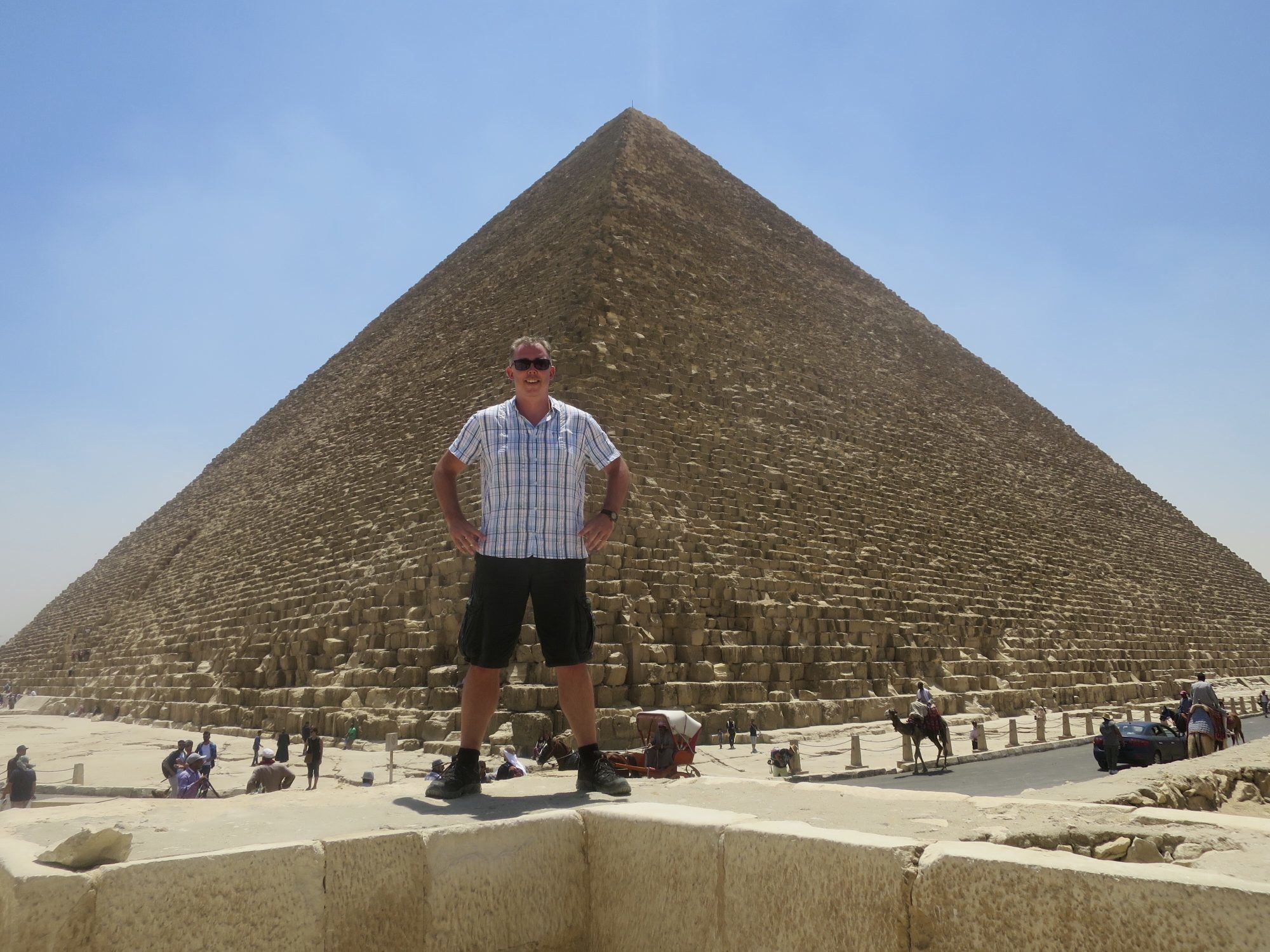
The Sphinx (head of a man and body of a lion) also located by the Pyramids, is a lot smaller than I was expecting, only 19m high, but it’s still the largest Sphinx in Egypt. Some restoration work visibly underway so cannot get to close to it at this time unfortunately.
So after these amazing sites, it was back on the bus and back to the hotel to collect luggage and then the dreaded 410mile (10 – 12 hour) bus journey to Luxor began. It took about 2 – 3 hours just to clear Cairo’s city limit, mostly because of traffic but was just thankful for the air-conditioning. It was a long, slightly cramped journey where just as you doze off, there is a speed bump to jolt you awake. This went on mile after mile and lost count of the amount of police / security checkpoints we had to go through. Some we were just waved through, others we were stopped and had to wait for armed escort vehicles. Despite all this, being stopped in the middle of Egypt in the middle of the night with no light pollution, I could see the Milky Way. Amazing. Eventually, we arrived in Luxor at a fantastic hotel at 03.30 in the morning. All I wanted to do is sleep and zonked out immediately.
Unfortunately there was an early start next morning at 07.00hrs. Doing this to try and avoid the heat, but about a 1 – 2 hour bus ride to visit Valley of the Kings and Hatchepsut Termple. The Valley of the Kings itself is not that impressive, just looks like a quarry, but this is where many of the Pharos and kings were buried, including Tutankhamun.
Luckily we got into Tutankhamun’s tomb and saw him, well, what was left off him. He was about 18-19 when he did and was about 5ft tall. His remains are blackened and you can only see his head and his feet – the rest of him is covered in a white cloth, but you can still see him, his teeth, hair, nails etc. In a way, kind of looks like the sacrificial sausage on a BBQ – you the one that always gets burned first. The sarcophagus was separate and intricately decorated but you are not allowed to take photos inside Tutankhamun’s tomb. There are several other tombs in which you can but only if you pay 300LE (about £13) and the hieroglyphics are so colourful and preserved.
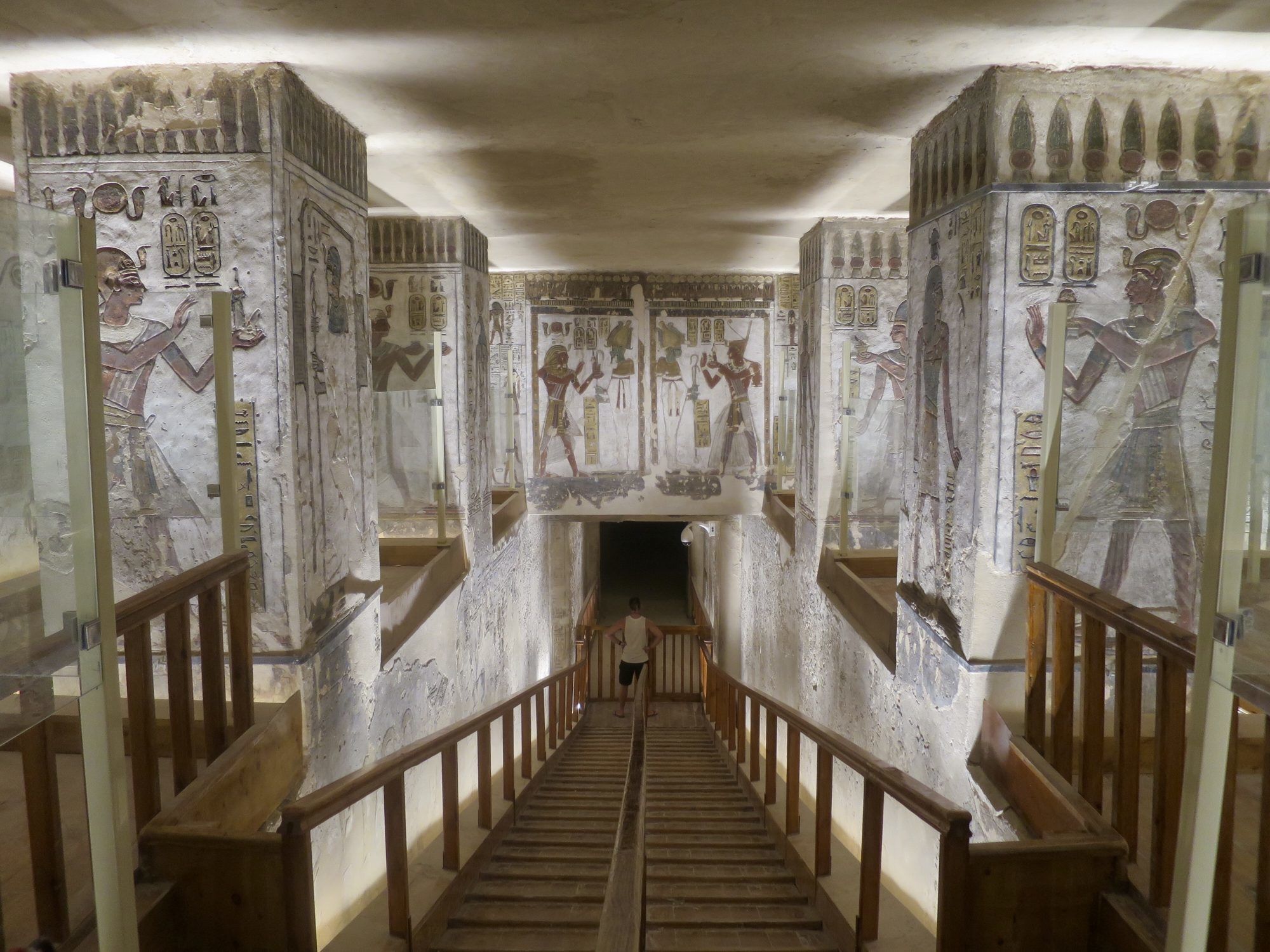
After this, we moved on to Hatchepsut Temple, which is probably what most people think of when they hear Valley of the Kings. It’s actually a Royal mortuary on the West Bank of the Nile built 15th century BC by Queen Hatshepsut, stepmother of pharaoh Thutmose III. Visibly amazing to see.
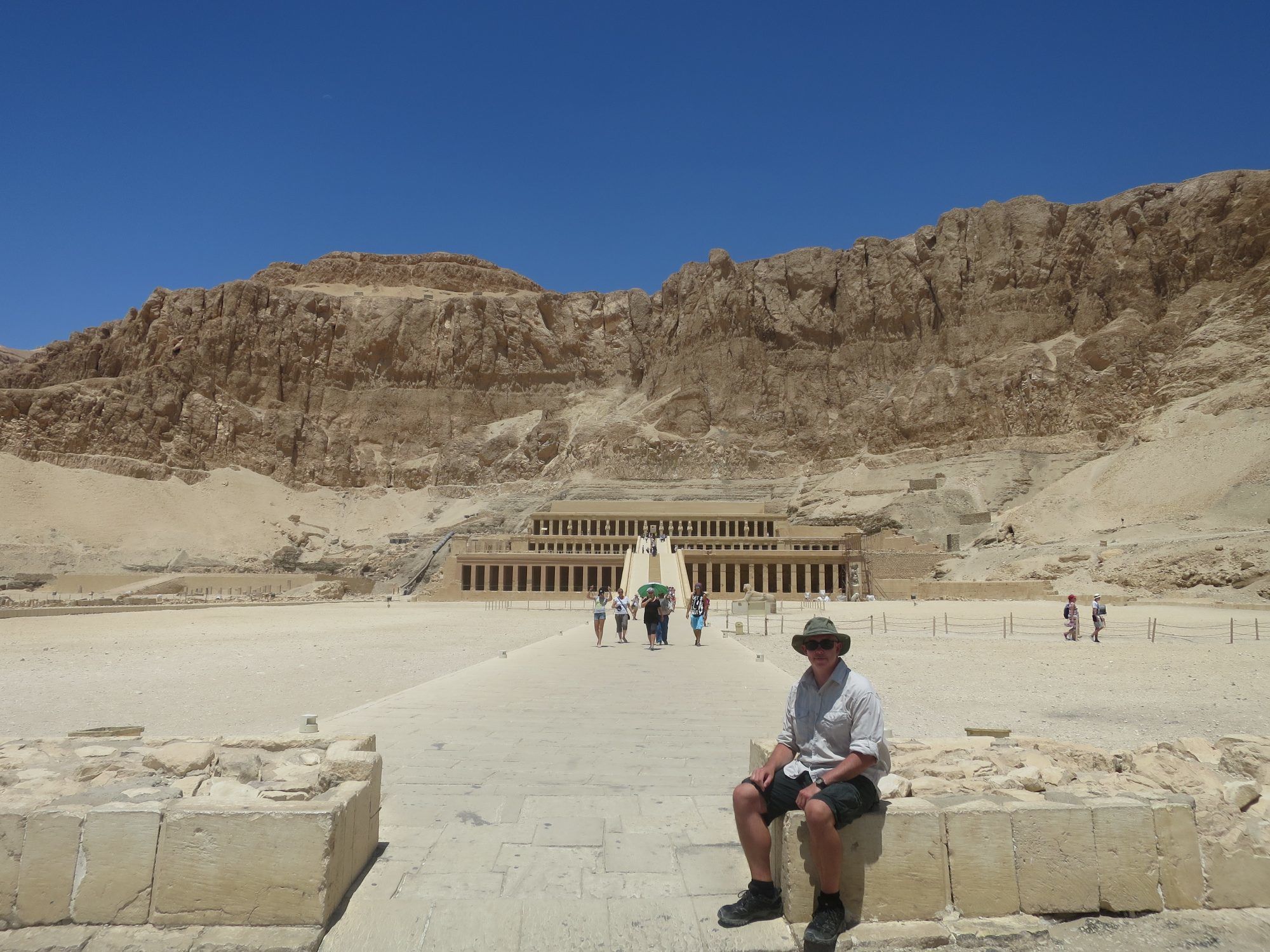
There are so many sites to visit here in Egypt, but perhaps one of the top ancient sites to see is Abu Simbel. Built by King Ramses II and cut into solid rock, they are known as the “Temple of Ramesses, beloved by Amun” it was one of six rock temples erected in Nubia during the long reign of Ramesses II. Their purpose was to impress Egypt’s southern neighbours, and also to reinforce the status of Egyptian religion in the region. Here there are two temples next to each other, one for his favourite wife and one for himself. Quite rare to find a wife on equal status of the king.
What is even more amazing is that when the Aswan High Dam was constructed in the 1960’s, Abu Simbel would have been flooded. So a major relocation project went under way to raise the Abu Simbel 65m higher up and just over 200m further inland to avoid the flooding.
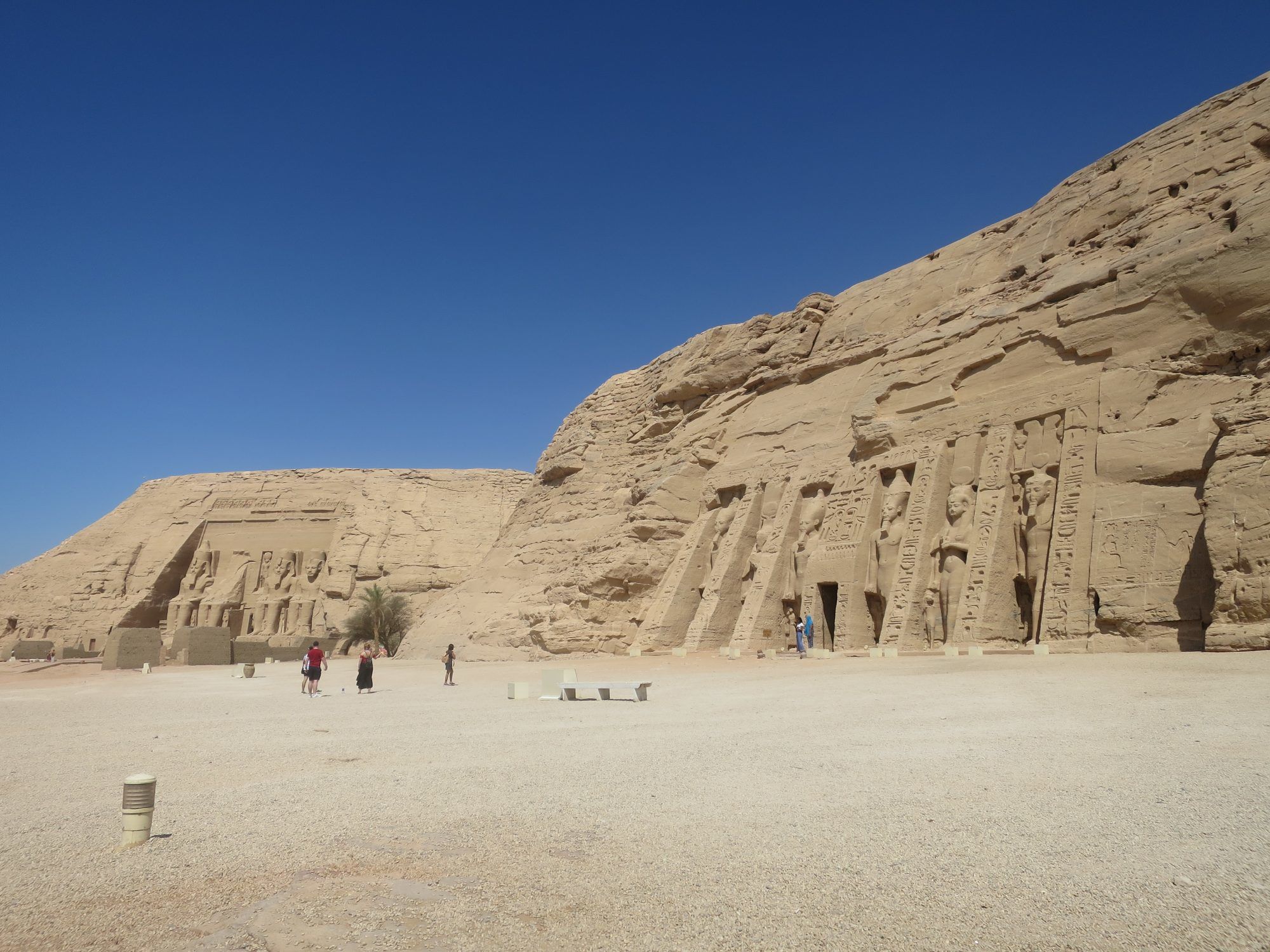
After Abu Simbel, visited the Aswan High Dam. This was really interesting and is one of Egypts most heavily protected sites. When it was build it produced 90% of Egypt’s electricity but now only 10% due to population increase. It’s 111m high and stretches nearly 4km. Lake Nasser holds nearly 170 trillion cubic meters of water and it is reckoned that if the dam were to fail, the water would reach Alexandria and the Mediterranean, just over 1000km away, in under 30mins.
After the ‘GCSE Geography revisit’, quick stop at Philae Temple on an island now protected from flooding since the Aswan High Dam was built.
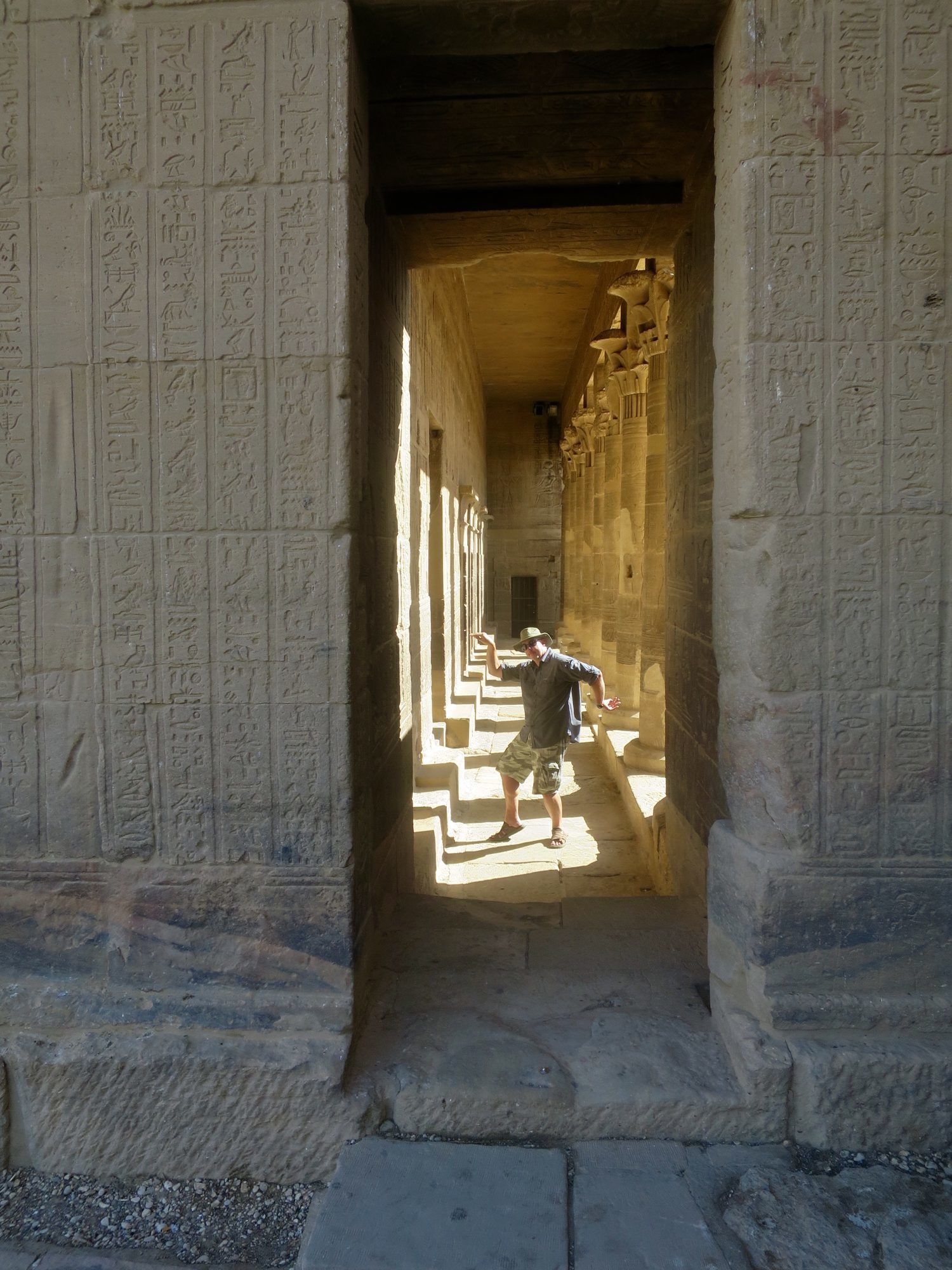
That’s a lot of sites, tombs and temples squeezed into a couple of days. It’s now time for some serious rest and relaxation. I am now on board a Nile cruiser, M/S Marquis and will be cruising to Luxor for the next few days, stopping off at Edfu on the way. Good news is there is a pool, great food and a great bar. Time for a G & T…

